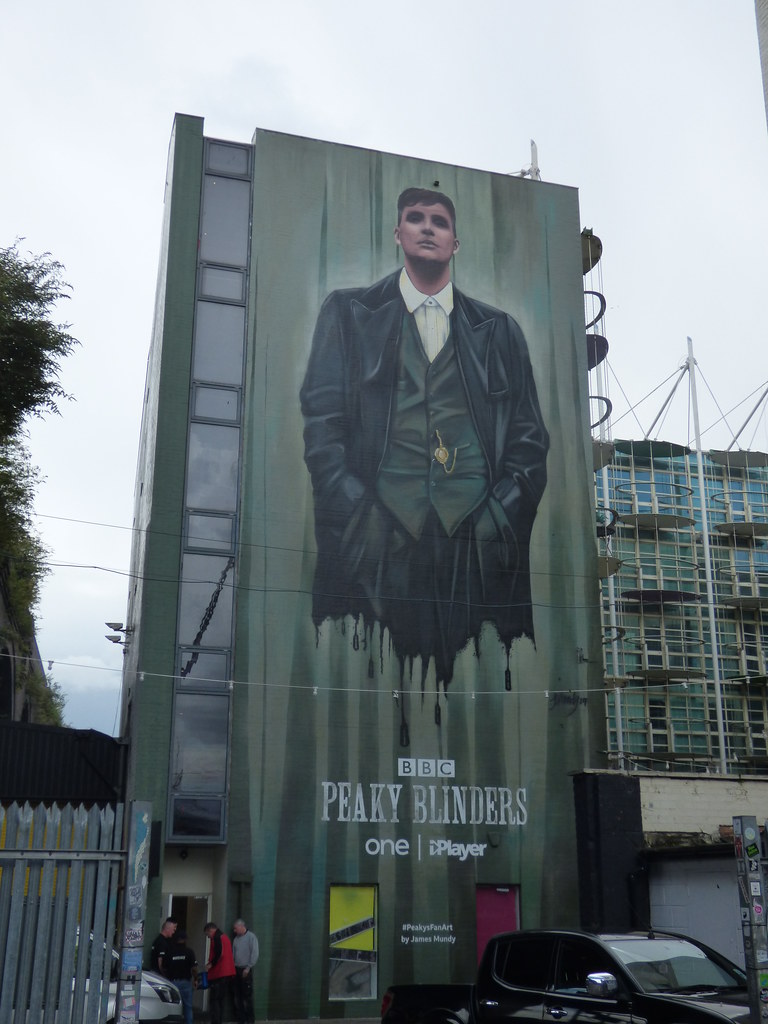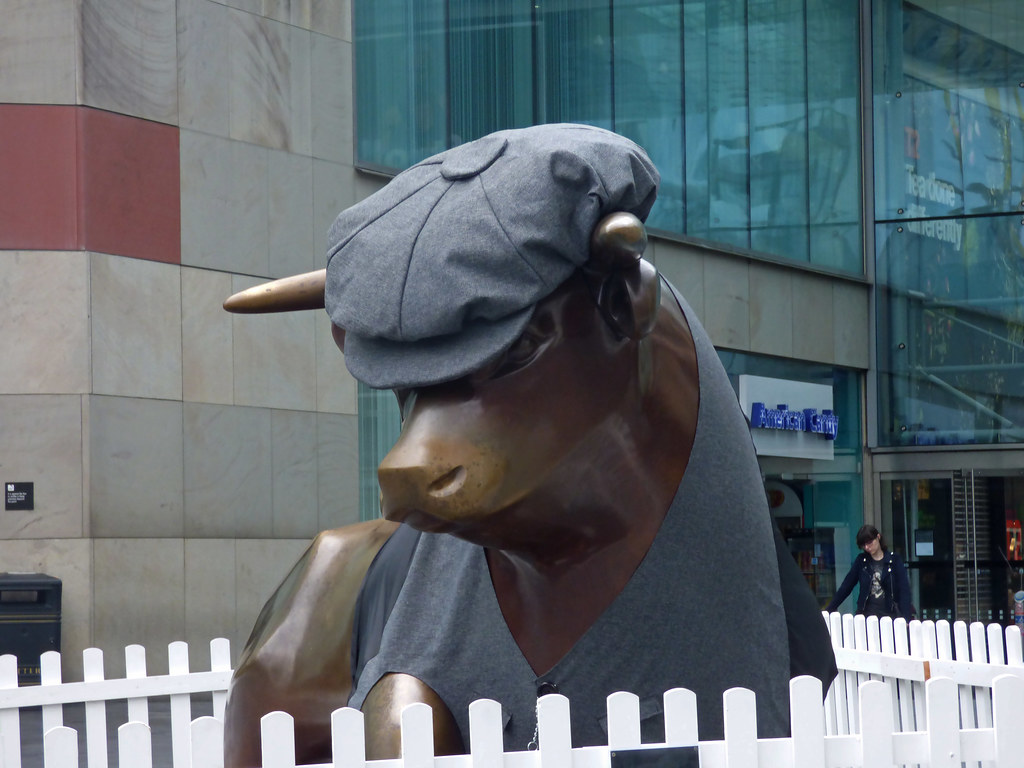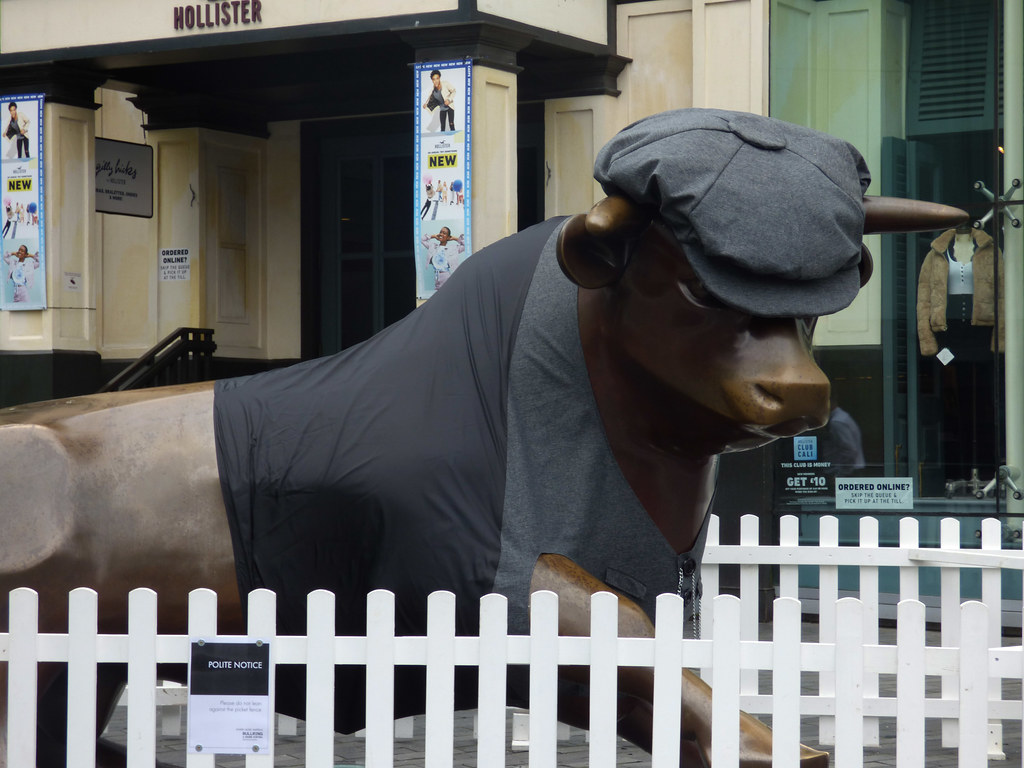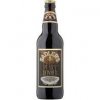-
Welcome to this forum . We are a worldwide group with a common interest in Birmingham and its history. While here, please follow a few simple rules. We ask that you respect other members, thank those who have helped you and please keep your contributions on-topic with the thread.
We do hope you enjoy your visit. BHF Admin Team
You are using an out of date browser. It may not display this or other websites correctly.
You should upgrade or use an alternative browser.
You should upgrade or use an alternative browser.
Peaky Blinders - A world away from Downton!
- Thread starter philbee
- Start date
- Status
- Not open for further replies.
Grea
master brummie
I’m glad it’s not just me then Eric. Too far fetched, too loud and totally boringI lost interest half way though the last series, gave it a go last night again but find it too much like the old James Cagney films back in the forties/fifties...……….boring!
AaronMcDonough
New Member
Hi,
Im looking for some further clarification on the original Peaky Blinders can anyone please help?
Was Thomas McDonald & Thomas McDonough the same person?
members had been charged with the severe wounding of Thomas MacDonald. He had been “found dazed outside a public house with sever razor slashes and head blows”. Indeed, the prosecutor explained that his face was slit from ear to lip. One man was discharged but the others were said to have come to Birmingham to create a disturbance. In their defence, the men’s solicitor declared that “MacDonald was a notorious fighter and bully among Midland race gangs”.
Although he said that he was a caster from Hockley, MacDonald was a serious racing rough. Born in 1882, when he was just ten he had been given six strokes of the birch rod for the petty crime of stealing bread. Punished for being hungry, MacDonald went on to receive convictions for obstruction and gaming. Then in 1907 he was sentenced to nine month’s hard labour for grievous bodily harm to a William Tooley. He was also handed six months to be served consecutively for assaulting a police officer.
Often operating under the alias of Thomas McDonough, MacDonald’s scar was recalled by his stepson, Jackie Currigan – a member of a tough but fair Birmingham family which built up a big business of legal betting shops. Jackie told me that MacDonald was indeed a very hard man and that his razor scar did go from his ear to his lip.
According to some accounts the attackers were members of the Sabini Gang. If this were so then this was a new development, for none of the London gangs had previously dared to make any raids into Birmingham, even during the midst of the violent racecourse war of 1921. However it is unlikely as the Sabinis had already begun to wane in influence. Instead it seems that MacDonald’s attackers were other Birmingham gangsters affiliated to the Birmingham Gang.
On June 23, 1925 the ‘Yorkshire Post and Leeds Intelligencer’ informed its readers that four of the assailants were Moses Kimberley and Isaac Compston Kimberley, both of whom were agents; William Kimberley, a professional backer of horses; and Charles Kimberley, a bookmaker’s clerk. All four were from Bordesley Green in Birmingham. The other two men were William Weston, a tailor, as was William Whitehouse from Camp Hill.
Two years previously, in a report in the ‘Evening Telegraph on May 23, 1923, William Kimberley was given as a 31 year-old commission agent living in Paddington when he was charged with wounding Steve Griffin in a Camden Town pub. Detective Inspector Gillan gave evidence as to the violent character of Kimberley and his associates who were well-known as racing pests and who made their living from blackmailing bookies.
Griffin had been struck with a broken glass, giving him cuts to the throat and wrists. He was an associate of Alfie White and Alfie Solomon, both of whom were allied with the Sabinis. With two others they had previously beaten badly a bookmaker with a hammer and then pointed a revolver at him and kicked him. It seems, then, that Kimberley’s attack was in revenge for this.
According to Brian McDonald, Kimberley had been born in Birmingham but was a member of George Brummy Sage’s Camden Town Gang, which was allied to Kimber and the Birmingham Gang. Kimberley was indeed from Birmingham as was his family. In 1907, when he was a twenty-year old cycle worker, he had been given eighteen months’ hard labour at the General Quarter Sessions of the Peace in the Victoria Courts in the city. This was for breaking and entering a house with intent to steal.
His brother, Charles Kimberley, also had a bad record. Between 1907 and 1909, he was convicted for theft three times in Birmingham; whilst in 1910 he had been found guilty of shop breaking at Stafford. Then in September 1912 he was sentenced to three years in prison for breaking and entering a shop and stealing two costumes. At that time he was a hawker. The previous year, the 1911 Census showed the two brothers living with two other brothers, Isaac and Henry, and their parents in Allcock Street, Deritend. This was very close to the locations of the attacks in the Garrison Lane Vendetta.
MacDonald’s slashing would suggest that there had been a serious fall-out within the always loose groups of villains that made up the Birmingham Gang and that the attack did not involve the Sabinis. As for the case of unlawful wounding against MacDonald, the prosecuting counsel took an unusual course. He stated that because the bandaged MacDonald admitted to being in a rival race gang he declined to give evidence. Consequently the case could not be continued and all the defendants were bound over to keep the peace for various sureties, bar for Charles Kimberley who was discharged.
MacDonald was then charged with “being a disturber of the peace and likely to persevere in such conduct”. He promised not to attempt anything in Birmingham, though – to which statement the clerk of the court asked if he would get his own back elsewhere. MacDonald replied, “I have made up my mind, I don’t care who knows it, to get my own back”. The stipendiary advised him that he had better take care and told him not to be foolish. MacDonald was also bound over.
This assault on MacDonald came at a time when the ‘Western Daily Press’ revealed that “disruptions had occurred” to the agreement between the Birmingham and London gangs to operate within different zones. The newspaper explained that this had been “scrapped, and the two separate and main gangs have been invading each other’s preserves”. This had led to a vendetta; whilst “peril and confusion” had been exacerbated by the emergence of new gangs.
Im looking for some further clarification on the original Peaky Blinders can anyone please help?
Was Thomas McDonald & Thomas McDonough the same person?
members had been charged with the severe wounding of Thomas MacDonald. He had been “found dazed outside a public house with sever razor slashes and head blows”. Indeed, the prosecutor explained that his face was slit from ear to lip. One man was discharged but the others were said to have come to Birmingham to create a disturbance. In their defence, the men’s solicitor declared that “MacDonald was a notorious fighter and bully among Midland race gangs”.
Although he said that he was a caster from Hockley, MacDonald was a serious racing rough. Born in 1882, when he was just ten he had been given six strokes of the birch rod for the petty crime of stealing bread. Punished for being hungry, MacDonald went on to receive convictions for obstruction and gaming. Then in 1907 he was sentenced to nine month’s hard labour for grievous bodily harm to a William Tooley. He was also handed six months to be served consecutively for assaulting a police officer.
Often operating under the alias of Thomas McDonough, MacDonald’s scar was recalled by his stepson, Jackie Currigan – a member of a tough but fair Birmingham family which built up a big business of legal betting shops. Jackie told me that MacDonald was indeed a very hard man and that his razor scar did go from his ear to his lip.
According to some accounts the attackers were members of the Sabini Gang. If this were so then this was a new development, for none of the London gangs had previously dared to make any raids into Birmingham, even during the midst of the violent racecourse war of 1921. However it is unlikely as the Sabinis had already begun to wane in influence. Instead it seems that MacDonald’s attackers were other Birmingham gangsters affiliated to the Birmingham Gang.
On June 23, 1925 the ‘Yorkshire Post and Leeds Intelligencer’ informed its readers that four of the assailants were Moses Kimberley and Isaac Compston Kimberley, both of whom were agents; William Kimberley, a professional backer of horses; and Charles Kimberley, a bookmaker’s clerk. All four were from Bordesley Green in Birmingham. The other two men were William Weston, a tailor, as was William Whitehouse from Camp Hill.
Two years previously, in a report in the ‘Evening Telegraph on May 23, 1923, William Kimberley was given as a 31 year-old commission agent living in Paddington when he was charged with wounding Steve Griffin in a Camden Town pub. Detective Inspector Gillan gave evidence as to the violent character of Kimberley and his associates who were well-known as racing pests and who made their living from blackmailing bookies.
Griffin had been struck with a broken glass, giving him cuts to the throat and wrists. He was an associate of Alfie White and Alfie Solomon, both of whom were allied with the Sabinis. With two others they had previously beaten badly a bookmaker with a hammer and then pointed a revolver at him and kicked him. It seems, then, that Kimberley’s attack was in revenge for this.
According to Brian McDonald, Kimberley had been born in Birmingham but was a member of George Brummy Sage’s Camden Town Gang, which was allied to Kimber and the Birmingham Gang. Kimberley was indeed from Birmingham as was his family. In 1907, when he was a twenty-year old cycle worker, he had been given eighteen months’ hard labour at the General Quarter Sessions of the Peace in the Victoria Courts in the city. This was for breaking and entering a house with intent to steal.
His brother, Charles Kimberley, also had a bad record. Between 1907 and 1909, he was convicted for theft three times in Birmingham; whilst in 1910 he had been found guilty of shop breaking at Stafford. Then in September 1912 he was sentenced to three years in prison for breaking and entering a shop and stealing two costumes. At that time he was a hawker. The previous year, the 1911 Census showed the two brothers living with two other brothers, Isaac and Henry, and their parents in Allcock Street, Deritend. This was very close to the locations of the attacks in the Garrison Lane Vendetta.
MacDonald’s slashing would suggest that there had been a serious fall-out within the always loose groups of villains that made up the Birmingham Gang and that the attack did not involve the Sabinis. As for the case of unlawful wounding against MacDonald, the prosecuting counsel took an unusual course. He stated that because the bandaged MacDonald admitted to being in a rival race gang he declined to give evidence. Consequently the case could not be continued and all the defendants were bound over to keep the peace for various sureties, bar for Charles Kimberley who was discharged.
MacDonald was then charged with “being a disturber of the peace and likely to persevere in such conduct”. He promised not to attempt anything in Birmingham, though – to which statement the clerk of the court asked if he would get his own back elsewhere. MacDonald replied, “I have made up my mind, I don’t care who knows it, to get my own back”. The stipendiary advised him that he had better take care and told him not to be foolish. MacDonald was also bound over.
This assault on MacDonald came at a time when the ‘Western Daily Press’ revealed that “disruptions had occurred” to the agreement between the Birmingham and London gangs to operate within different zones. The newspaper explained that this had been “scrapped, and the two separate and main gangs have been invading each other’s preserves”. This had led to a vendetta; whilst “peril and confusion” had been exacerbated by the emergence of new gangs.
Latest comment

 www.theguardian.com
www.theguardian.com

Peaky Blinders mania puts Birmingham on global 'screen tourism' map
Record number of visitors at UK’s second largest city and West Midlands boosts local industry
Pedrocut
Master Barmmie
Latest comment

Peaky Blinders mania puts Birmingham on global 'screen tourism' map
Record number of visitors at UK’s second largest city and West Midlands boosts local industrywww.theguardian.com
A record 42.8 million tourists visited Birmingham last year. Good job they didn't all come at the same time!
DavidGrain
master brummie
If I go to London and buy two single tickets as I often do. How do they know whether I am a tourist visiting London or a tourist visiting Birmingham?Who counted them.Myself and the wife came up from Kent 4 times.Nobody counted us.Might be one plucked out the sky by someone in the Council on a bonus.
I have just discovered that the Guardian do a summary of each episode of Peaky Blinders. This came up on my phone today

Peaky Blinders recap: series five, episode three – the life of a gangster's wife for me
In a nicely paced episode, Linda, Lizzie and Gina told their stories, while the Shelbys continued to collect enemies
Robert Ensor (bob)
master brummie
Am I to understand this correctly most of this show is not filmed in Birmingham.
I have never watched the show at all
I have never watched the show at all
jmadone
master brummie

Visit Peaky Blinders filming locations
Explore the filming locations of Steven Knight's hit crime drama, Peaky Blinders.
Try this link
DavidGrain
master brummie
Several canal and factory scenes were shot in the Black Country Museum. Street scenes were mainly shot in Liverpool. Studio scenes were, I believe, shot in Bradford. I have read that they are planning to do more shooting in Birmingham in the later series.
Ray T
master brummie
I have a friend in Canada who told me she absolutely loves watching the Peaky Blinders and she was very curious about Birmingham. When I told her Small Heath really existed and that I used to collect train numbers from the bridge at Small Heath Station as a boy, she said she'd enjoy the series even more. It's good to see Brum attracting such interest in countries around the world.
Robert Ensor (bob)
master brummie
I read on my Google feed how Birmingham is awash with Peaky tourists
Pedrocut
Master Barmmie
Peaky Blinders festival...
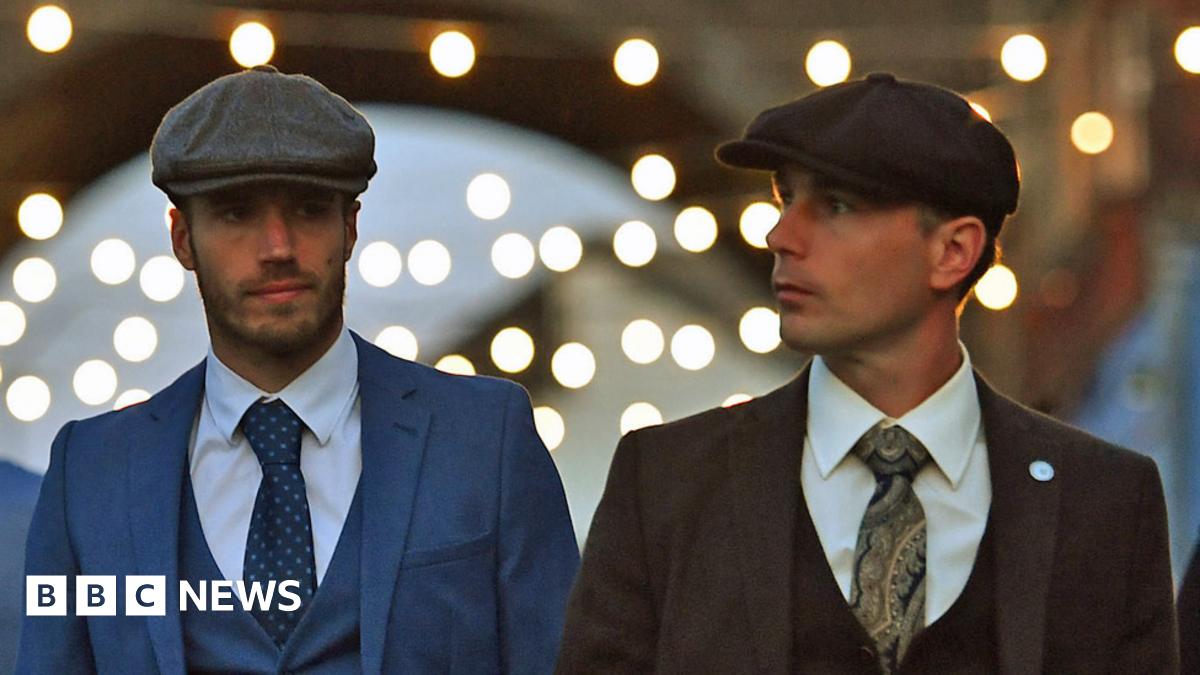
 www.bbc.co.uk
www.bbc.co.uk

The festival letting fans follow in the footsteps of the Peaky Blinders
Thousands of flat cap-wearing fans take to the streets where the original Peaky Blinders once roamed.
Maria Magenta
master brummie
Peaky Blinders festival...

The festival letting fans follow in the footsteps of the Peaky Blinders
Thousands of flat cap-wearing fans take to the streets where the original Peaky Blinders once roamed.www.bbc.co.uk
There was something about this on Broadcasting House this morning. Helen McCrory's dialect coach was on, in the context of getting an American to speak Wolverhampton (!)
Robert Ensor (bob)
master brummie
That's for those Pesky Blighters that come to Brum by that new tram systemThere was something about this on Broadcasting House this morning. Helen McCrory's dialect coach was on, in the context of getting an American to speak Wolverhampton (!)
farmerdave
master brummie
A second book on the Peaky Blinders, by Carl Chinn, comes out on September 19th. It is called "Peaky Blinders: the Real Story. Costs (paperback) £8.99 and published by John Blake. There was an extensive interview with Carl Chinn, on the Peaky Blinders, published in The Times T2 supplement today. Dave.
https://www.waterstones.com/book/pe..._medium=affiliate&utm_campaign=Genie+Shopping
https://www.waterstones.com/book/pe..._medium=affiliate&utm_campaign=Genie+Shopping
My father (b 1905) told me about the peaky blinders. They always interested me. But I have not watched any of the TV series. I am afraid that I would end up throwing things at the TV. I wonder if I should watch at least the first series. Do they get the accent right? Do they, say, show someone coming out of a pub in Small Heath, he just crosses the road and goes into Snow Hill station? The equivalent did happen in some American films that were supposedly in London. Any advice you have for me would be welcome.
Have you ever heard of the other peaky blinders? Eric Partridge in his masterly Dictionary of Slang and Unconventional English (1937) says it also became a nickname for railway men from Birmingham because of their peaked caps.
Have you ever heard of the other peaky blinders? Eric Partridge in his masterly Dictionary of Slang and Unconventional English (1937) says it also became a nickname for railway men from Birmingham because of their peaked caps.
Pedrocut
Master Barmmie
Yes, so does it follow that Alfie Solomons is not actually dead? Looking again at the deserted beach at Margate you can see that the dog resuscitates Alfie, and by licking the wound he keeps him going until help arrives.
Told yer Alfie wornt dead!
Maria Magenta
master brummie
Steven Knight is on The Media Show on Radio 4 at 4.30 today.
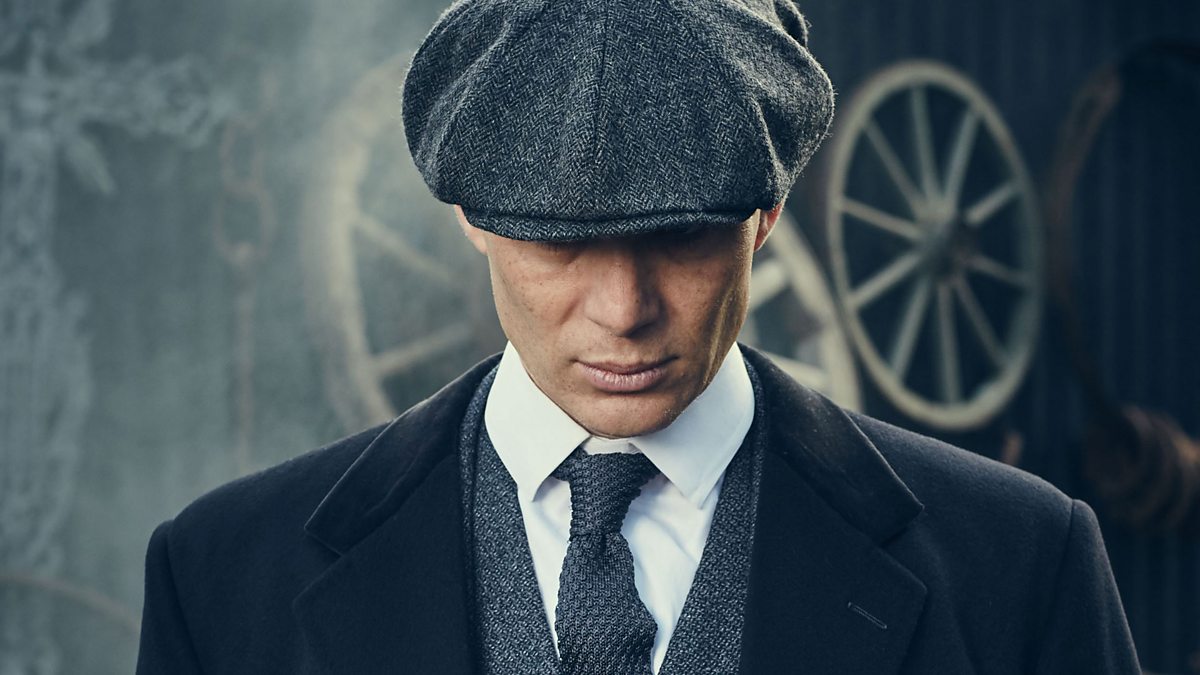
 www.bbc.co.uk
www.bbc.co.uk

BBC Radio 4 - The Media Show, Who Wants to Be a Peaky Blinder?
From hit game shows to gangster drama, Steven Knight on his extraordinary career.
Maria Magenta
master brummie
Robert Ensor (bob)
master brummie
Well here it would be a Saturday morning cartoon series, then toys and a breakfast cereal.
- Status
- Not open for further replies.

